Defining High Integrity
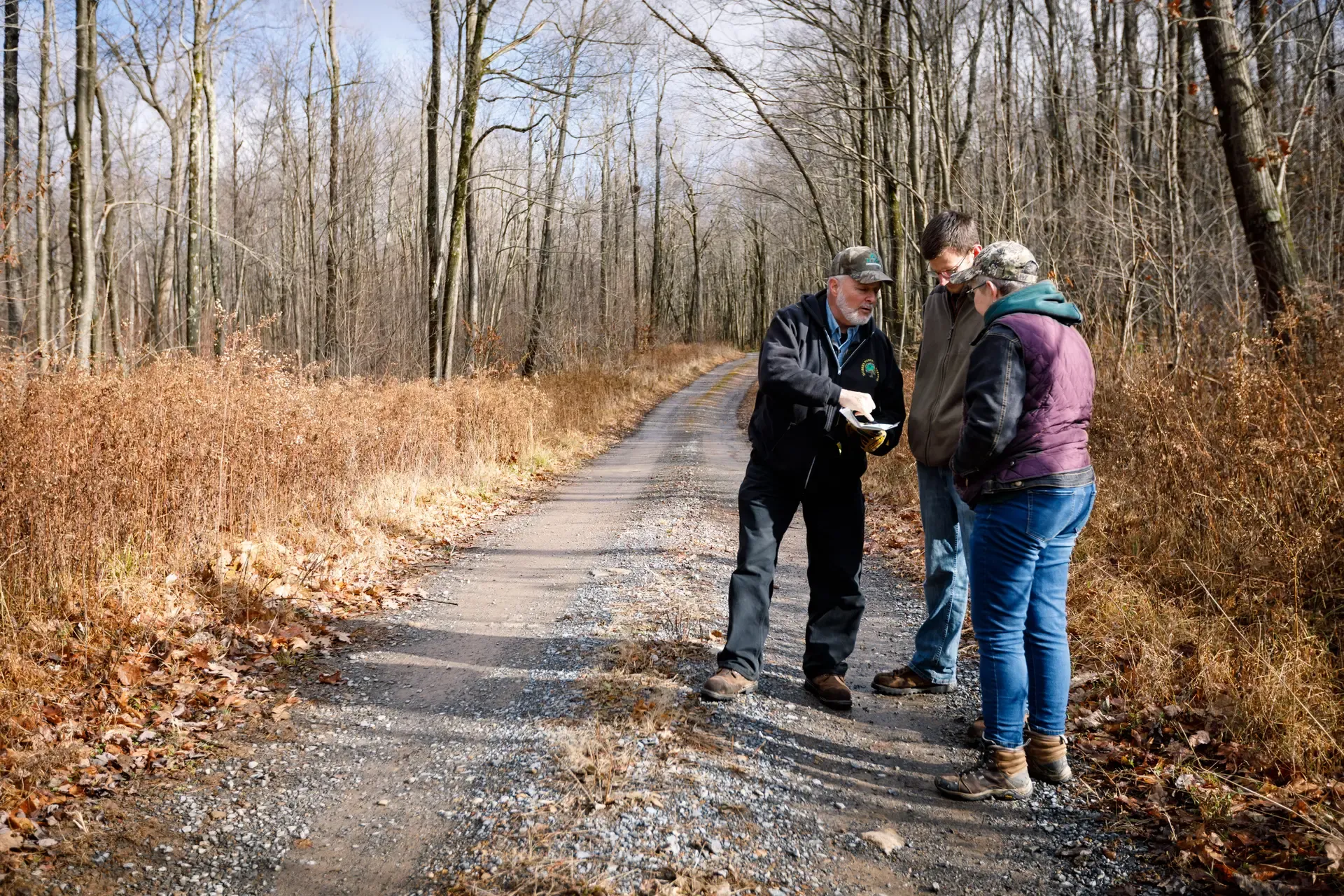
If you have paid attention to carbon markets over the past twelve months — and maybe even if you haven’t — you have likely read articles or watched reports about “low quality” carbon credits and concerns about whether they are making a real impact on the climate. At the same time, you’ve probably heard the terms high-integrity and high-quality used as the new standard. This begs the question, “What is a high-quality carbon credit? What makes a carbon credit ‘real’ as opposed to ‘hot air?’” And, perhaps most importantly, “Why does this issue of high-quality matter to me?” So let’s dive into this topic and try to clarify what quality is and why it’s important.
Quality in a carbon credit is relatively easy to define, and relatively difficult to measure. We’ll try to do both.
A carbon credit is high quality if it represents an actual change in the atmospheric concentration of CO2 in the long term. The quality question is basically, “Did the atmosphere feel a difference?” If the answer is yes, the project can be called high quality. If the answer is no, the project is of low quality from a carbon perspective. Crucially, that’s true even if the project does all sorts of other things that are great (support biodiversity, promote local economies, etc.).
To ensure a true impact on the atmosphere, we use a rigorous and scientific framework to conservatively estimate the impact of these changes. And, luckily for us, those frameworks already exist, and they have been developed over decades of trial and error to provide ever-improving estimates of the impact of our activities.
These frameworks apply to carbon projects through standards, which are published by international organizations, and through methodologies, which describe the precise steps a carbon project takes to estimate its impact in accordance with those standards. These standards and methodologies form a kind of “recipe” for a quality carbon credit. In the Family Forest Carbon Program’s case, we use the Verified Carbon Standard and a methodology that the American Forest Foundation, The Nature Conservancy and TerraCarbon wrote specifically to produce high quality credits on family forest lands.
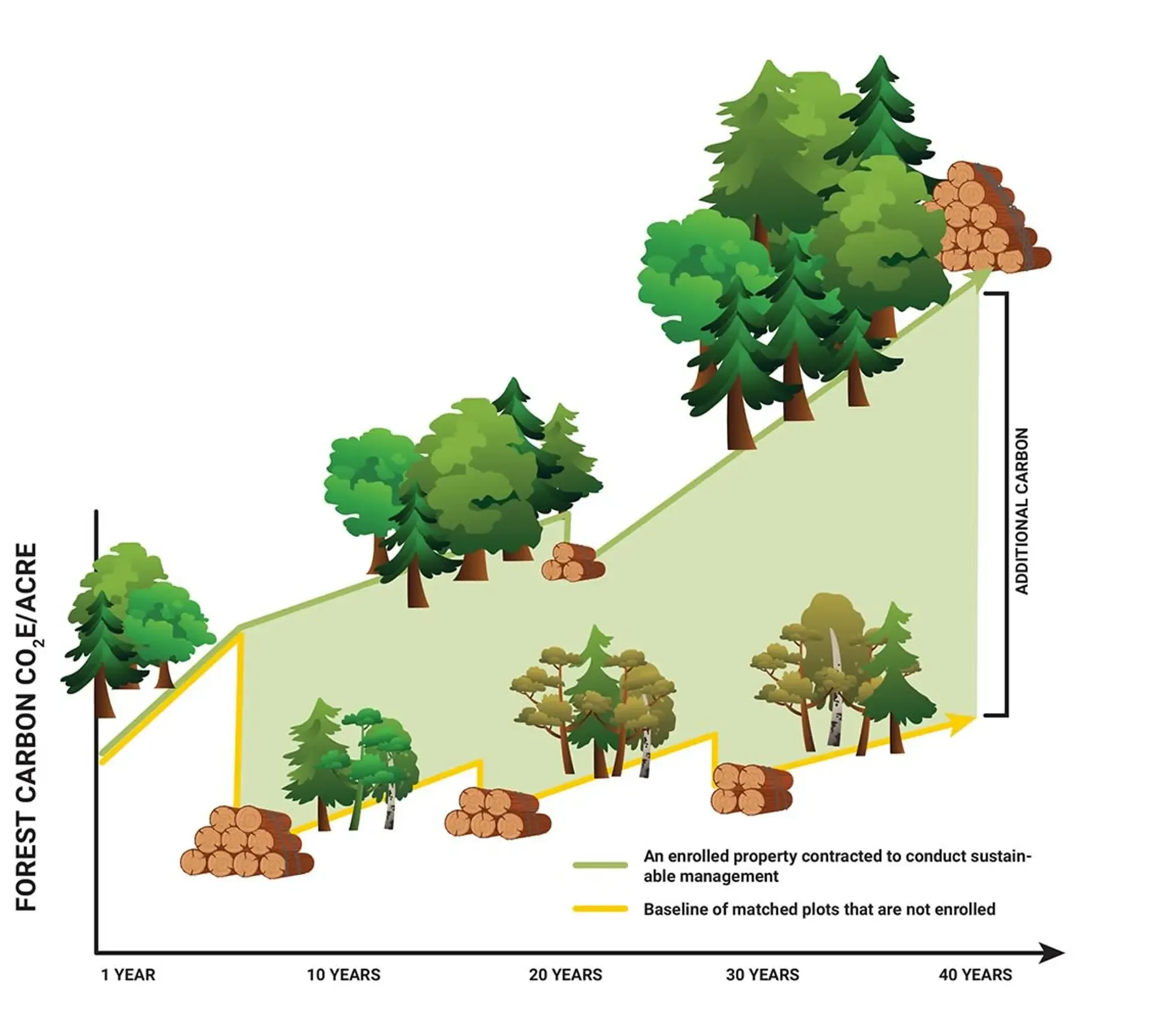
There are several key “ingredients” we use in that recipe, and it’s worth a moment to mention three of them:
Additionality: “Additional” carbon means carbon that is in “addition to” the carbon that would have been there anyway without the carbon program. This is a challenging concept, because it requires us to look into a parallel universe in which the carbon program never existed—which is, technically speaking, impossible. Instead, we develop methods of estimating what the world would be like without the carbon program. For a much fuller description of the innovative, first-of-its-kind method we use to demonstrate additionality, learn more here.
Permanence: Permanence refers to the issue of whether the carbon we sequester and store during a project will stay out of the atmosphere for a defined period—usually, 100 years. Different programs address permanence in different ways. Some require landowners to sign 100-year contracts. Others use different accounting systems to try to measure the value of shorter durations. FFCP helps transition landowners to long-term, sustainable management that will pay for itself after the program and the contract have expired. We also provide ongoing services to landowners after the contract is over and monitor for any carbon that gets re-emitted to the atmosphere.
Leakage: If one forest stops harvesting, the demand from the local mill doesn’t go away. Rather, they harvest trees from somewhere else, and so part of the climate benefit “leaks” back into the atmosphere. Depending on the kind of project you implement, the standards require you to reduce your climate benefit to account for leakage. FFCP does that, but also tries to design practices that increase the amount of sustainably harvestable timber over time, thus reducing our leakage impacts (and supporting rural communities that depend on timber markets!).
There are other important parts of the recipe that we have to take into account if we want to create a high-quality credit. But at its heart, a quality credit is one that represents an actual change in CO2 in the atmosphere, as determined by the project’s adherence to key standards, and as described in a methodology. Those standards include key concepts like additionality, permanence and leakage.
So why should you care if the carbon credit you produce from your forestland or that you buy as a company is high quality? The basic answer is, if it’s not high quality, it likely won’t do the job you need it to do.
If you’re a landowner and you signup with a project that produces low-quality credits, they likely won’t be sold, or if they are, it will be at a low price—so all the wonderful “potential” benefit you heard about at the beginning of the project probably won’t materialize. If you’re a company and you buy a low-quality credit from a project, the job you need that credit todo—compensate for a “residual” emission—won’t be done because the credit doesn’t represent a real change in the atmosphere and you’ll be left with low-quality credits that don’t help you meet your climate commitments.
And most importantly to effectively fight climate change and make a true impact on the atmosphere, all of us working in carbon markets need to ensure we are producing and buying credits of the highest quality.
Read the full article in Woodlands Magazine to learn more about carbon credits and how you can partner with high-integrity carbon programs.
Related Articles
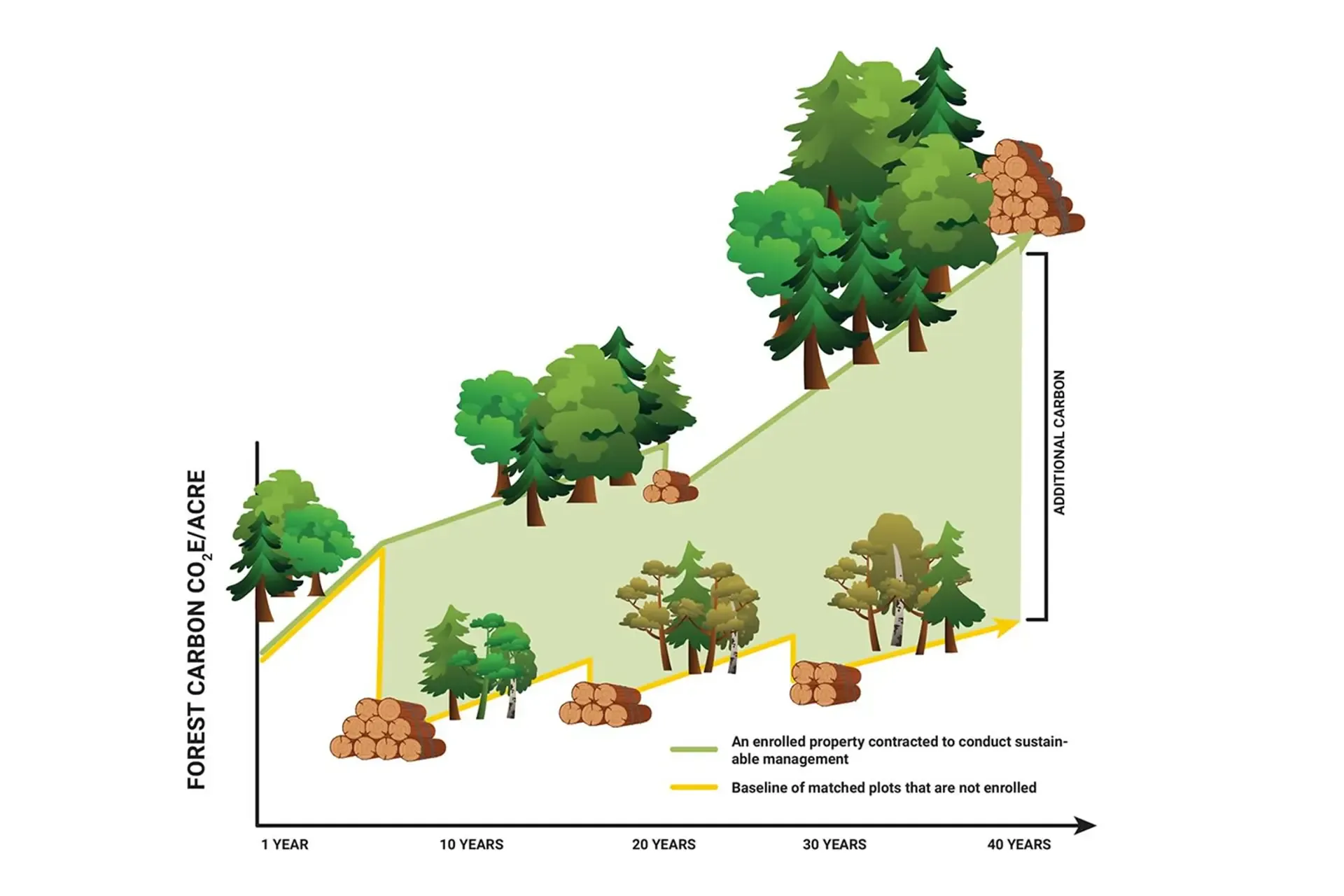
April 7, 2023
The Sticky Wicket that is Additionality
Carbon is everywhere in your forest—in the trees, in their leaves, in the soil, in the dead woody debris that litters the forest floor, and even in the wood products that are created when your trees are harvested. When landowners hear that there are programs that will pay them for their carbon, some think about that carbon—the carbon that is out there in their woods right now, today. But that’s not exactly what carbon programs are after. Carbon programs are after additional carbon—the carbon that would not have been there without the program’s help.
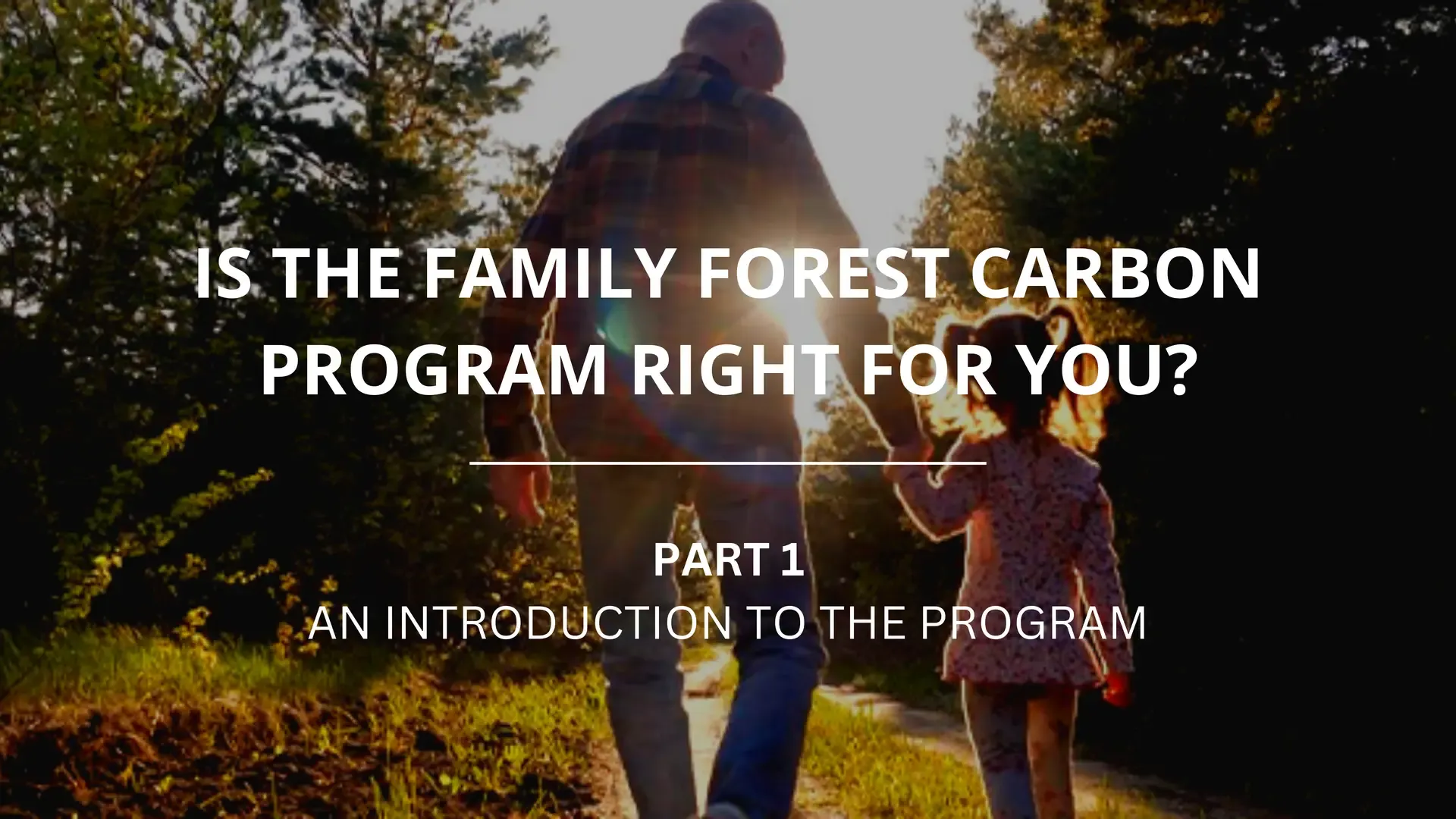
March 28, 2023
Is the Family Forest Carbon Program Right For You? Part 1: An Introduction to the Program
As you work with the Family Forest Carbon Program (FFCP) you will learn that we are different from other carbon programs and opportunities for landowners. We are proud of what makes us unique and want to provide you with this information to help you make the right decision for you and your property. In this post we look at the key benefits of enrolling in FFCP and how we are different from other carbon programs.
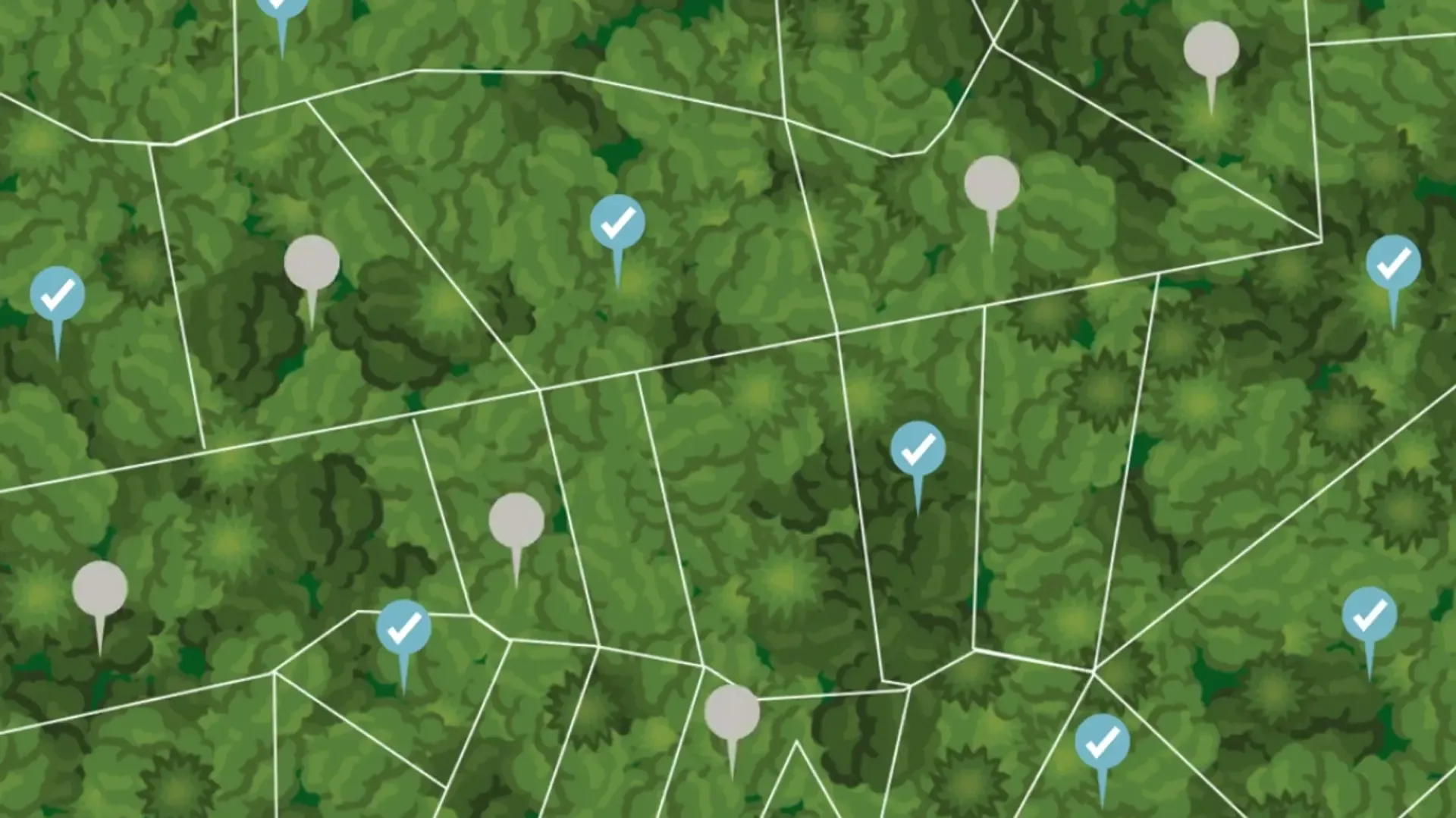
March 10, 2023
VIDEO: Our Carbon Accounting Methodology Explained
Learn more about the Family Forest Carbon Program's carbon accounting methodology that improves accuracy and transparency — and ensures our program is having a real impact.